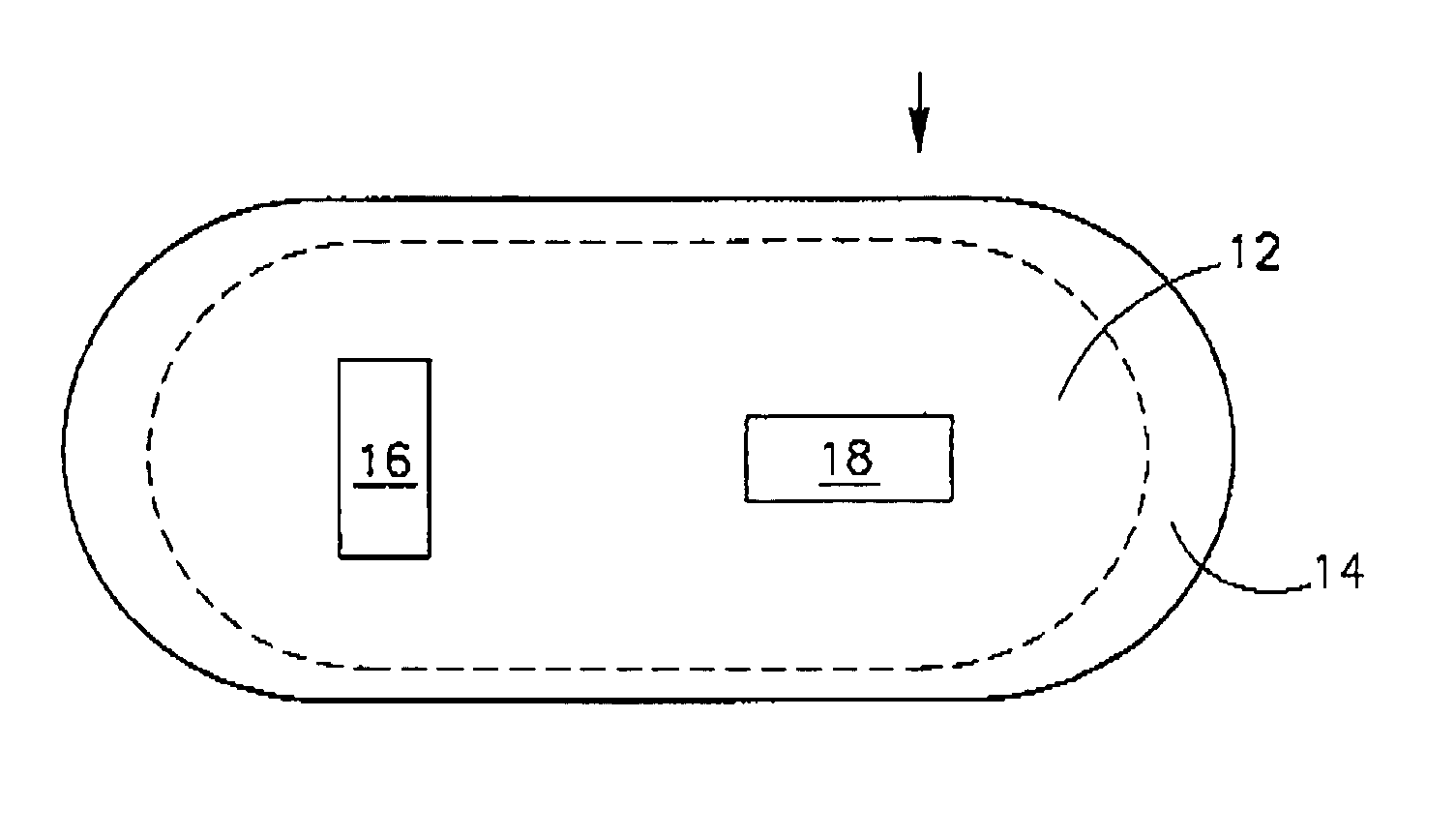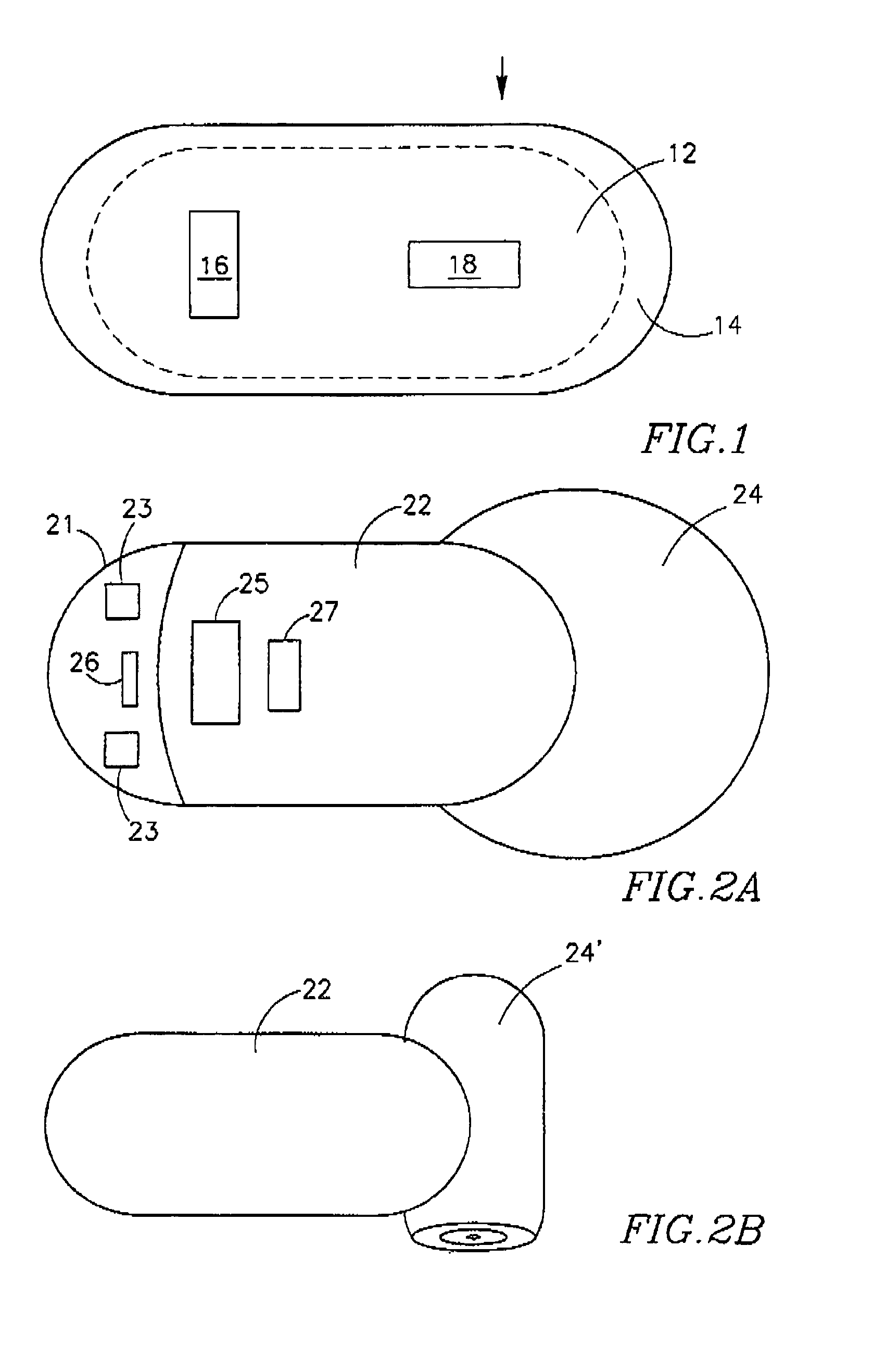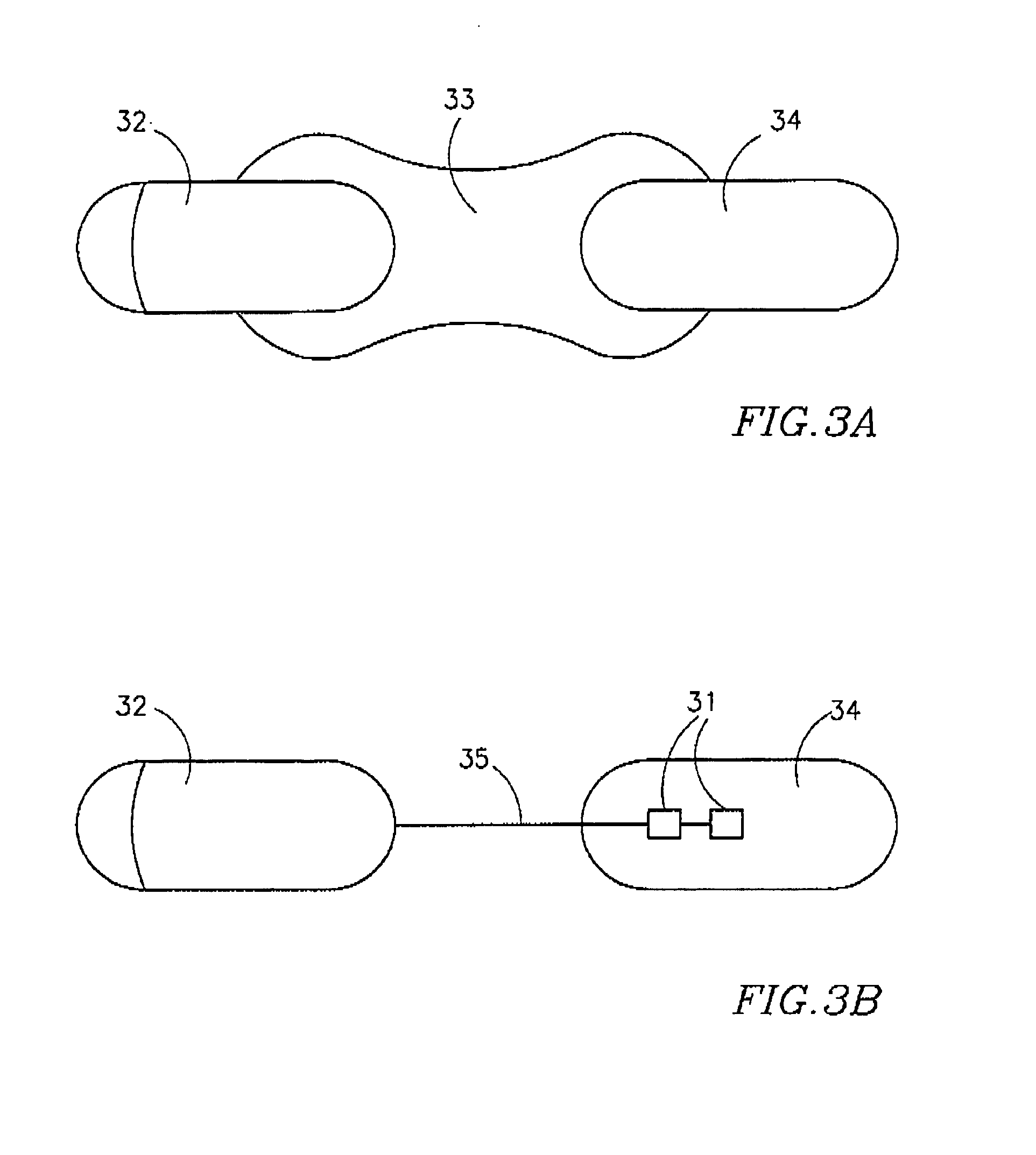Floatable in vivo sensing device and method for use
a sensing device and in vivo technology, applied in the field of in vivo sensing, can solve the problems of slow and unpredictable passage of objects through the large intestine, inability to reach the distal parts of the colon, and high cost and inconvenience for patients
- Summary
- Abstract
- Description
- Claims
- Application Information
AI Technical Summary
Benefits of technology
Problems solved by technology
Method used
Image
Examples
Embodiment Construction
[0017]A sensing device, according to an embodiment of the invention, is schematically illustrated in FIG. 1. The sensing device 10 is an autonomous capsule shaped device and can thus be easily moved through the small intestine. However, it should be appreciated that an autonomous sensing device according to different embodiments of the invention can have any shape or design suitable for being inserted and moved through body lumens, such as the gastrointestinal tract, the reproductive system, blood vessels, etc.
[0018]Device 10 includes a sensor system 12 and a buoyant body 14. In one embodiment, the buoyant boy 14 is essentially a part of the sensor system 12. The sensor system 12 may be a pH sensing system as known in the art, an image sensor as known in the art or other known in vivo sensing systems such as an in vivo temperature measuring system, a pressure sensor, a shear sensor, a sensor of electrical conductivity and other known in vivo sensors. In other embodiments a combinati...
PUM
 Login to View More
Login to View More Abstract
Description
Claims
Application Information
 Login to View More
Login to View More - R&D
- Intellectual Property
- Life Sciences
- Materials
- Tech Scout
- Unparalleled Data Quality
- Higher Quality Content
- 60% Fewer Hallucinations
Browse by: Latest US Patents, China's latest patents, Technical Efficacy Thesaurus, Application Domain, Technology Topic, Popular Technical Reports.
© 2025 PatSnap. All rights reserved.Legal|Privacy policy|Modern Slavery Act Transparency Statement|Sitemap|About US| Contact US: help@patsnap.com



